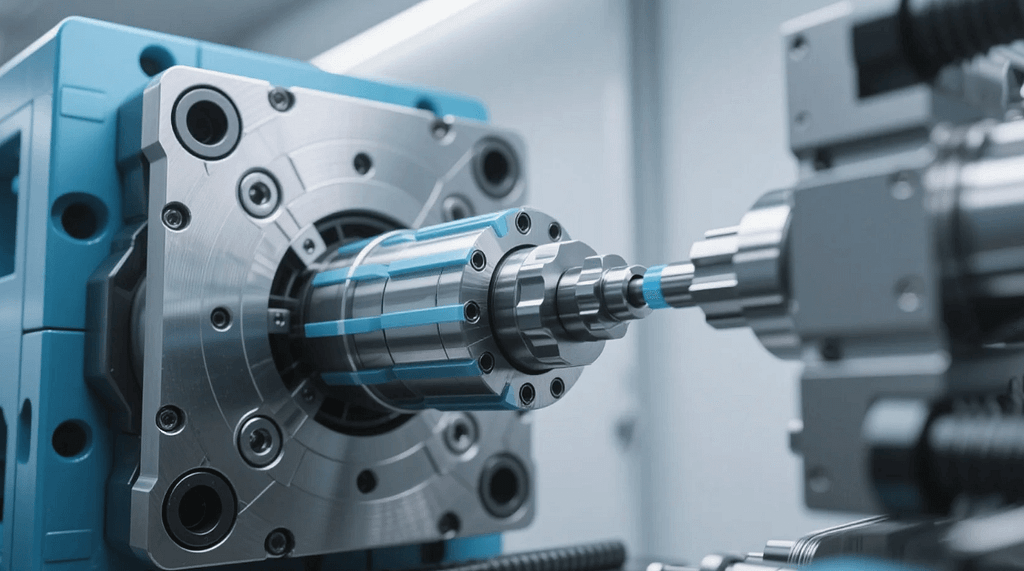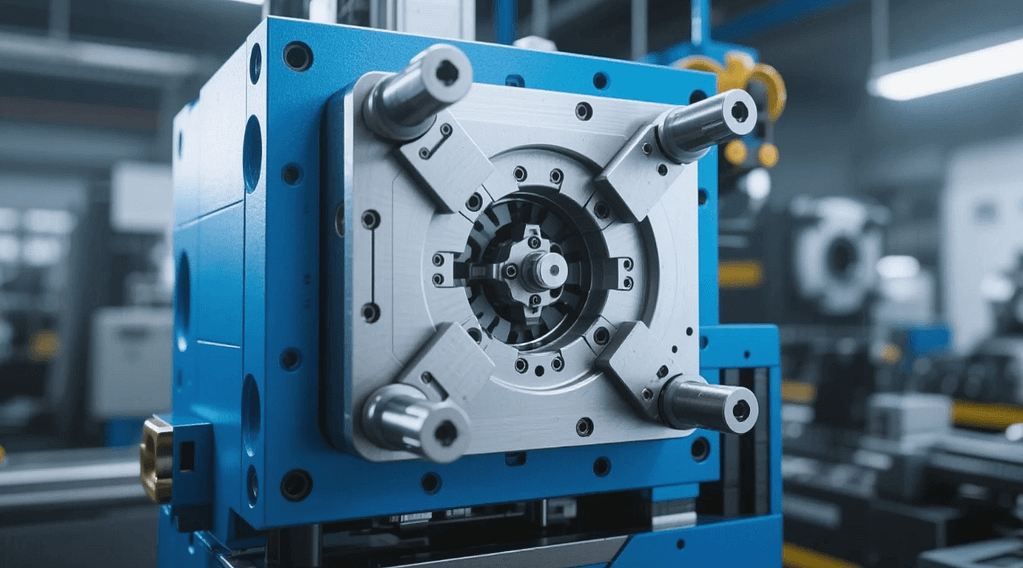The world of industrial design and product development heavily relies on prototypes and functional models. These models are not merely aesthetic representations; they are crucial tools for testing, validation, and presentation. For creating these highly accurate and often complex parts, moldeo por inyección stands out as an unparalleled manufacturing process. Its ability to produce identical parts with tight tolerances and excellent surface finishes makes it the go-to method for crafting precision industrial models.
What is Injection Molding?
At its core, moldeo por inyección is a manufacturing process for producing parts by injecting molten material into a mold. The material, typically a thermoplastic or thermosetting polymer, is fed into a heated barrel, mixed, and then forced into a mold cavity, where it cools and solidifies to the configuration of the mold cavity. This process is highly versatile and can create a vast array of parts, from simple components to highly complex, multi-functional models.
The process typically involves several key stages:
- Clamping: Two halves of the mold are securely clamped together by the molding machine.
- Injection: Plastic pellets are fed into a heated barrel, melted, and then injected into the mold cavity under high pressure.
- Cooling: The molten plastic cools and solidifies within the mold, taking on its shape.
- Ejection: The mold opens, and the solidified part is ejected.
This cyclical nature of moldeo por inyección allows for high-volume production with remarkable consistency, a crucial factor when replicating intricate industrial models.
Why Choose Injection Molding for Precision Industrial Models?
The advantages of utilizing moldeo por inyección for precision industrial models are numerous and significant.
Unrivaled Precision and Accuracy
Perhaps the most compelling benefit is the exceptional precision and accuracy it offers. The molds themselves are meticulously machined, often using advanced CNC (Computer Numerical Control) technology, ensuring that the final parts adhere to incredibly tight dimensional tolerances. This is paramount for industrial models where slight deviations can impact functionality or fit. Features as small as a few microns can be faithfully reproduced, making it ideal for intricate designs and miniature components.

High Repeatability and Consistency
When producing multiple iterations of an industrial model or creating a series of identical components for an assembly, repeatability is key. Moldeo por inyección excels in this regard, consistently producing parts that are virtually identical from the first shot to the last. This consistency is vital for maintaining product quality and ensuring seamless integration in larger systems. Businesses can rely on predictable results, reducing waste and rework.
Versatilidad de materiales
A vast array of materials can be processed using moldeo por inyección, including various thermoplastics like ABS, polycarbonate, nylon, and acrylic, as well as some thermosetting plastics. Each material offers a unique set of properties, such as strength, flexibility, heat resistance, and chemical resistance. This wide material selection allows designers to choose the optimal material for the specific functional requirements of their precision industrial models, whether it needs to be rigid, transparent, or durable.
Cost-Effectiveness for Volume Production
While the initial investment in tooling (the mold itself) can be substantial, moldeo por inyección becomes incredibly cost-effective for medium to high-volume production runs. The per-part cost significantly decreases as production quantities increase due to the speed of the process and minimal material waste. This makes it an economically sound choice for companies requiring numerous precise industrial models.
Excellent Surface Finish and Aesthetic Appeal
The molded parts often emerge with an excellent surface finish, requiring minimal post-processing. The mold cavity’s surface dictates the part’s finish, and highly polished molds can produce parts with a smooth, glossy appearance. This is particularly beneficial for industrial models used for presentations or as final product representations, where aesthetic appeal is as important as functionality. Textures, logos, and intricate details can also be directly incorporated into the mold design, eliminating secondary operations.
Complex Geometries and Intricate Details
Moldeo por inyección allows for the creation of highly complex geometries and intricate details that would be challenging or impossible to achieve with other manufacturing methods. Features like undercuts, thin walls, internal channels, and threaded inserts can be integrated into the mold design, resulting in parts that are both functional and aesthetically pleasing. This capability is invaluable for industrial models that replicate complex mechanical systems or detailed product designs.
Applications in Precision Industrial Model Development
The applications of moldeo por inyección in the realm of precision industrial models are extensive and continue to expand.
Functional Prototypes and Testing Models
For engineers and designers, creating functional prototypes is a critical step in the product development cycle. Moldeo por inyección enables the production of prototypes that accurately represent the final product in terms of material properties, dimensional accuracy, and functionality. These prototypes can be rigorously tested for fit, form, and function, allowing for design iterations and improvements before committing to mass production. This significantly reduces risks and saves considerable time and resources.
Architectural and Scale Models
Architects and urban planners frequently use scale models to visualize designs and present concepts to clients. Moldeo por inyección can produce highly detailed and accurate miniature components for these models, from intricate building facades to miniature vehicles and landscape elements. The precision ensures that every detail, no matter how small, is faithfully represented, contributing to a realistic and compelling model.
Medical Device Prototypes
The medical industry demands extreme precision and biocompatibility. Moldeo por inyección is widely used to create prototypes and small-batch production of medical device components. From intricate surgical tools to diagnostic equipment parts, the process ensures the necessary accuracy and material integrity for critical applications.
Consumer Product Replicas and Miniatures
Manufacturers often produce miniature replicas of their consumer products for marketing, promotional, or collectible purposes. Moldeo por inyección is the ideal method for creating these highly detailed and accurate miniature versions, capturing the essence of the original product with remarkable fidelity.
Tooling and Fixture Components
In various manufacturing processes, specialized tooling and fixtures are required to hold and position parts. Moldeo por inyección can produce precise components for these tools and fixtures, ensuring accuracy and repeatability in the overall manufacturing workflow.
The Future of Injection Molding for Precision Models
The field of moldeo por inyección is continuously evolving, driven by advancements in materials science, mold design, and automation. New high-performance polymers with enhanced properties are constantly being developed, offering even greater possibilities for precision industrial models. Additive manufacturing (3D printing) is also increasingly being used to create molds for injection molding, particularly for low-volume production or rapid prototyping, further expanding the versatility of the process. Smart manufacturing technologies, including AI and machine learning, are being integrated into moldeo por inyección processes to optimize parameters, predict defects, and enhance efficiency, leading to even more precise and cost-effective production of industrial models.
Conclusión
Moldeo por inyección is an indispensable process for creating precision industrial models, offering an unparalleled combination of accuracy, repeatability, material versatility, and cost-effectiveness. Its ability to transform raw materials into intricate and functional components with exceptional fidelity has made it a cornerstone of product development and industrial design across diverse sectors. As technology continues to advance, the capabilities of moldeo por inyección will only expand, further solidifying its position as a vital tool for bringing innovative industrial models to life.
PREGUNTAS FRECUENTES
Q1: What materials are commonly used in injection molding for precision industrial models?
A1: Common materials include ABS (Acrylonitrile Butadiene Styrene) for durability, PC (Polycarbonate) for strength and transparency, Nylon (Polyamide) for strength and wear resistance, and Acrylic for optical clarity. The choice depends on the specific requirements of the model.
Q2: How does injection molding compare to 3D printing for precision industrial models?
A2: While 3D printing is excellent for rapid prototyping and low-volume, highly complex parts without tooling costs, moldeo por inyección excels in high-volume production, material versatility, surface finish, and achieving tighter dimensional tolerances for identical parts. For precision industrial models, moldeo por inyección often offers superior final part quality and cost-efficiency at scale
Q3: What is the typical lead time for injection molded precision industrial models?
A3: The lead time primarily depends on the complexity of the mold design and fabrication. Mold creation can take several weeks to a few months. Once the mold is ready, the actual production of parts is very rapid, often just seconds per part.
Q4: Can injection molding create models with multiple colors or materials?
A4: Yes, advanced techniques like overmolding and co-injection molding allow for the creation of parts with multiple colors or different materials integrated into a single component, adding to the complexity and functionality of precision industrial models.
